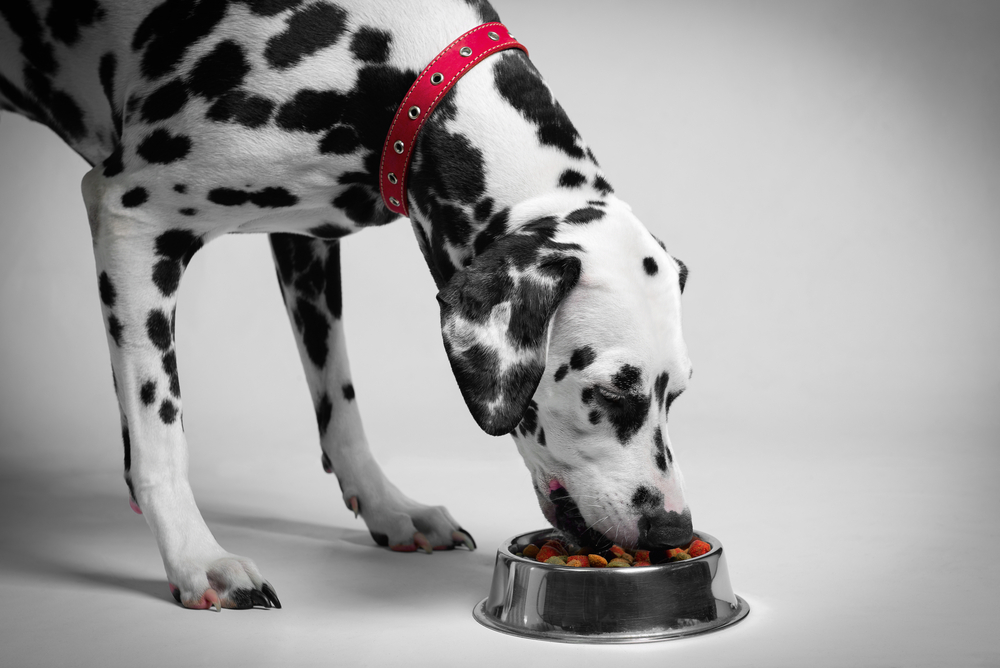Blog
How to pick the best food for your dog (Part 2 of 4)
Last time we looked at the ingredient list of your dog food, how they are constructed and what tricks and marketing tactics the manufacturers use to get you to choose their product over their competitors.
This blog looks at protein and how to identify good quality protein in your dog food. Again you’re going to need to look at the ingredient list in more detail.
Protein
When investigating the protein quality of your chosen dog food look for named meats such as ‘chicken’, ‘chicken meal’, ‘turkey’, ‘turkey meal’, ‘lamb’, ‘lamb meal’, ‘salmon’, ‘salmon meal’ etc.
Avoid generic ingredients that do not indicate a species such as ‘meat’, ‘meat by-products’, ‘meat by-product meal’, ‘meat meal’, ‘meat & bone’, ‘fish’, ‘fish meal’, ‘poultry’, poultry meal’, ‘liver meal’ etc.
There is a lot of confusion about what ‘by-product’ actually means. And let’s face it ‘by-product’ doesn’t sound tasty or nutrition and it certainly doesn’t sound like something a loving owner wants to feed their four legged friend. Needless to say some dog food manufactures take advantage of these negative perceptions by stating “no by-products” on the packaging.
Again this is misleading because nearly all the ingredients in commercial dog food are by-products of one form or another. Dog food would be to expensive otherwise.
The main challenge with by-products is that they can include a wide variety of ingredients that vary tremendously in digestibility and quality. They are not necessarily a bad thing; we just need to understand the total quality of the food rather than focusing on various terms and jumping to conclusions.
So, for example let’s look at the difference between ‘chicken meal’ and ‘chicken by-product meal’?
‘Chicken meal’ often comes from chicken carcasses – the part of the chicken that is left over when all the chicken meat has been removed for human consumption. ‘Chicken by-product meal’ on the other hand contains varying amounts of clean flesh and skin (also found in ‘meal’), plus chicken heads, feet, and guts. Although chicken heads, feet and guts probably make you cringe and sound poor quality we must remember that our dogs need nutrients and not ingredients. The truth is that the inclusion of other body parts, especially internal organs (almost always classed as ‘by-product’) may maintain or improve the quality of a pet food!
I’m not encouraging you to purchase dog food that includes ‘by-products’, I’m simply saying we need to be realistic about the ingredients used in dog food and not necessarily assume they are bad for our dog.
While ‘protein meal’ in most cases are of higher quality than ‘by-product meal’ it really comes down to knowing if the meal that is used in the food is of good or poor quality. There are a couple of ways of helping to answer that question. First, always look for a named source meat by-product. For example, ‘lamb by-product meal’ or ‘Turkey by-product meal’ is probably going to be of higher quality than ‘meat by-product meal’.
Second, look for a ‘by-product meal’ of the same animal as the main animal protein source. For example, a food containing ‘chicken meal’ toward the top of the ingredient list and ‘lamb by-product’ further down the ingredient list would give me cause for concern. However, if the ‘chicken meal’ was accompanies by ‘chicken by-product’ it’s likely to be better quality.
Third, steer clear of dog food containing any animal by-product as its main protein ingredients. So long as it’s the same animal as the primary protein and presented in smaller amounts is okay.
And finally, avoid protein from non-animal sources such as corn gluten, pea protein, potato proteins, rice protein etc. – especially as the primary source of protein.
The next blog in the series will help you to decipher carbohydrate ingredients and make an informed choice about what type of carbohydrate suits your dog.

